About 20,000 years ago, somewhere along the crease where the Cascade Mountains drop into the plains, black-tailed jackrabbits and snowshoe hares mated.
But as snowshoe hares, with their unique ability to seasonally change from brown to white, bounded away, they took with them a black-tailed jackrabbit gene, one that would serve them well millennia later: the black-tailed jackrabbit ability to stay brown all winter.
Donate Now to Protect Nature
Help protect threatened lands and waters around the globe.
Fast forward to today, as the climate in the Cascades continues to warm and snowpack comes later and leaves earlier, more and more of those winter brown snowshoe hares are beginning to appear.
Their relatives in other parts of the country, however, continue to struggle with changing seasons, leaving them more vulnerable to predation with white fur on dry ground. The Cascade hares are a real-time readjustment to a very real and present danger.
This surprising example of adaptation, published 2018 in Science, offers some hope in the face of an uncertain future.
But it should not be used to lull us into a false sense of security that animals simply adapt to an ever-changing climate, says author and University of Montana professor Scott Mills. Instead, the example shows that many animals, even those as adapted to their surroundings as snowshoe hares, could potentially, if given the space and the time, adjust to survive an unknown future.
Color Changes and Climate
Most species evolved unique adaptations to their environments. Wood frogs freeze their bodies in winter only to thaw out again in spring. Axolotls can regrow limbs along with spinal cords and even hearts. Bears recycle their own urine during hibernation to heal wounds and prevent atrophy.
But few adaptations are quite as obvious, at least to the human eye, than creatures that change color twice a year.
Take the Arctic and snowshoe hares. Beginning in the fall, the lagomorph with dusty brown fur that perfectly matches its surroundings, begins to molt. The physiology of the coat change is similar to many other furry mammal winter coat swaps, from mule deer to Labrador retrievers. The thin, summer coat is shed and in grows a thicker winter coat.
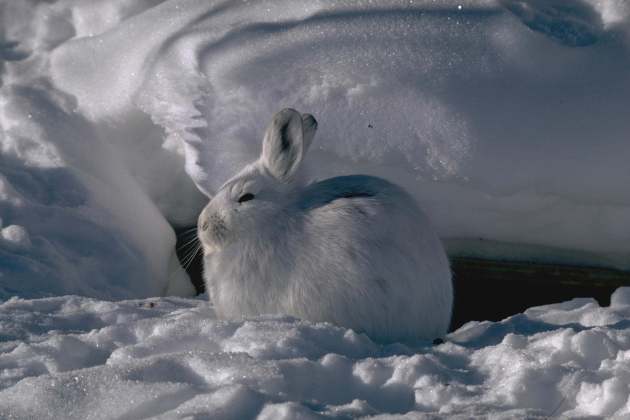
But instead of growing back a thicker, dusty brown coat, these winter-adapted hares grow back a thick, white coat, allowing them to bound around on a blanket of snow, keeping them safer from hawks and eagles hunting from above and foxes or coyotes hunting from ground.
More than 20 species, including Arctic fox and long-tailed weasels, evolved the ability to shed their gray and brown summer colors for glistening white winter fur. These species, which also include various species of lemming and ptarmigan along with a Siberian hamster, molt at roughly the same time of year.
While the changes may seem to be tied to snow and cold weather, they’re actually tied to the sun and length of day. That wasn’t a problem historically, when length of day corresponded with cold weather and snowy conditions, but it’s become increasingly mismatched as snow and cold weather comes later in the winter.
“How quickly hares change depends partly on snow. They start changing at the same time because the photo period isn’t variable, but when you have no snow and it’s really warm, they can change to white a little slower,” says Marketa Zimova, an assistant professor at Ohio University who has studied color mismatch for years. “But if the fall or spring are too warm or the snow is too short, it’s not enough to fully avoid mismatch.”
Basically, there’s a buffer but not a big one. And so climate change is taking an adaptation and turning it into a hazard.
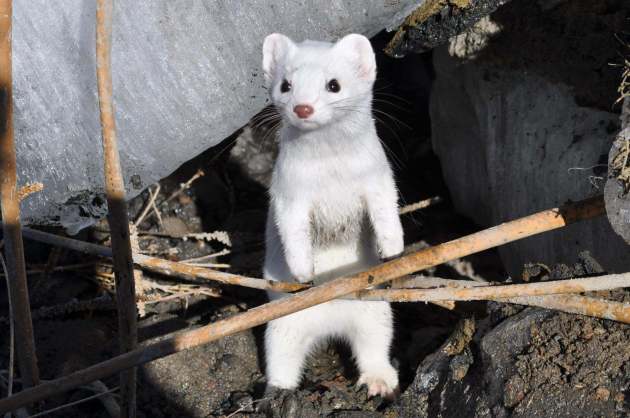
Nature and Nurture
Mills is very clear: Hares aren’t stupid. But they’re also not very aware when their coat color makes them stand out like a black sheep. Mills has studied snowshoe hares for decades, often looking for signs that the animals realize when their white coats stand out on brown backgrounds. He can’t find any evidence because hares never needed to know what they looked like.
“So they don’t behave rationally,” Mills says. “If you were sitting in a white coat on top of no snow, you would think, ‘I’m going to get out of the way because if I don’t, I’m going to get killed.’”
Hares don’t. Ptarmigan, on the other hand, do know they stand out.
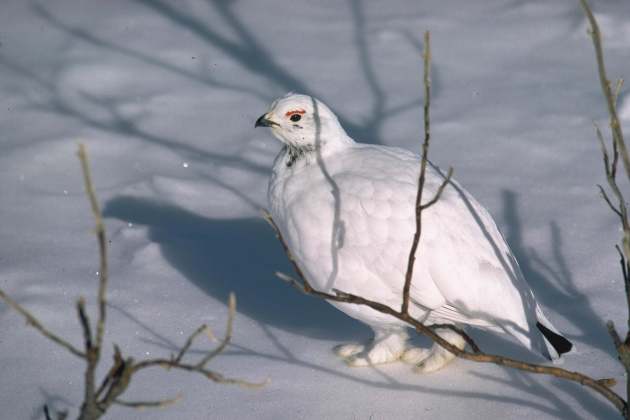
A 2001 paper details how bright white male ptarmigans strut out onto patches of dark earth to flap, dance and shake for all the world to see, hoping to attract a mate. It’s a risky move, like waving a flag proclaiming “eat me” to predators, but it’s also their best shot at getting the attention of a female.
Once they find a hen ptarmigan and mate, however, they roll in mud and dirt or look for snow to once again hang out on. It’s evidence of what Mills calls plasticity, or a species’ ability to modify its behavior to its surroundings.
As for other color-changing species like Arctic fox and weasels, Mills isn’t yet sure. Though he notes the more generalist a species–like wolves, foxes or coyotes–the better they’ll be able to adapt to a changing world.
But for those animals who aren’t maybe quite so aware of their color, Zimova and Mills point to the winter brown snowshoe hares and even more noticeably, the white-tailed jackrabbit.
The white-tailed jackrabbit is particularly well-suited to adapt as the climate changes because unlike the snowshoe hares with a winter brown gene which is recessive, the white-tailed jackrabbit winter brown gene is dominant.
“The trait gets exposed a lot faster and it can change a lot faster,” Mills says. “Evolutionary change can happen fast.”
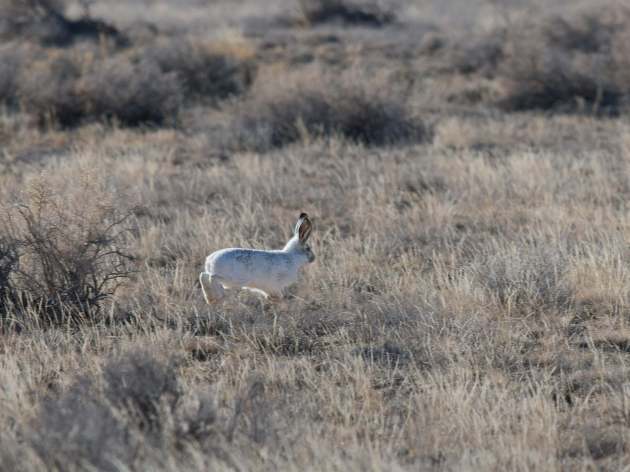
Habitat Still Matters (and So Does Connectivity)
While Mills’ stories of adaptations and adjustments give people hope, he also wants people to understand that wildlife need us now more than ever. And what they need remains astonishingly basic.
Wildlife, from snowshoe hares that turn white in winter to monarch butterflies that migrate thousands of miles every year, all need large stretches of connected habitat. More connected habitat not only leads to more robust populations, which provides more opportunity for genetic mutations and plastic traits that can help them adapt, but also means disparate populations can connect and spread genetics.
If the winter brown snowshoe hares in the Cascades can reach to snowshoe hare populations in the northern Rockies, for example, then that ability to stay brown in the winter will also spread. We should also limit additional stressors on animals.
“Evolution happens most efficiently one stressor at a time. If lots of different stressors are thrown at them,” Mills says. “It will be harder for evolution to operate because you’re having different genes being selected that could be at cross purposes with each other.”
Lastly, while Mills and Zimova do see hope for species adjusting and adapting, those changes still take time. The more we can slow the pace of climate change, the more time these animals have to adapt.
“There is absolutely scientifically based hope for biodiversity under climate change,” he says. “But we need to work hard at it.”
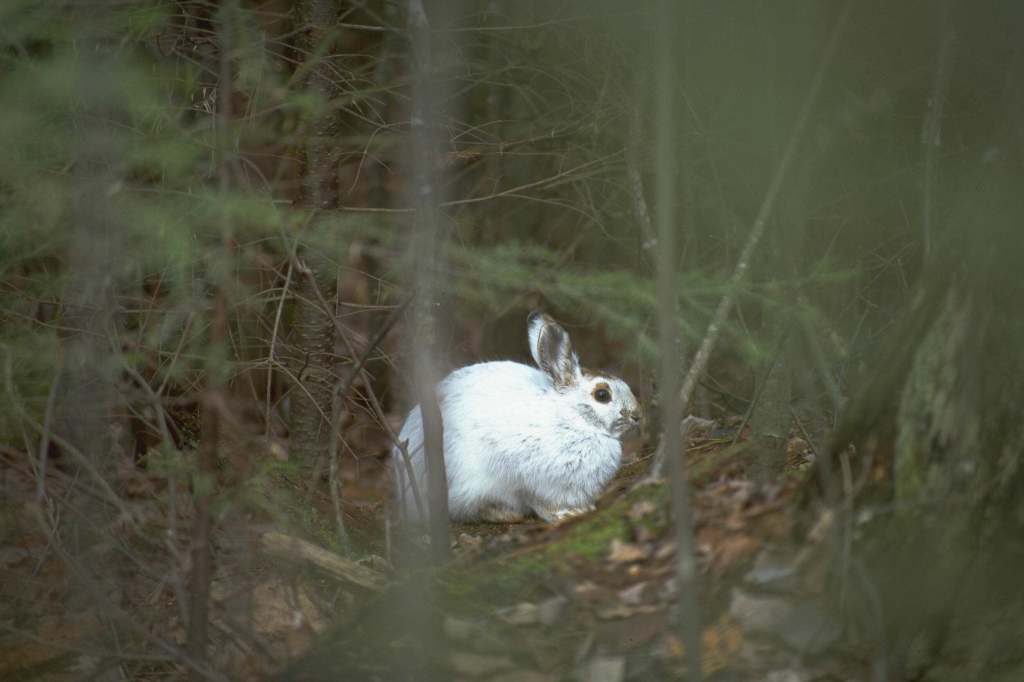



Join the Discussion